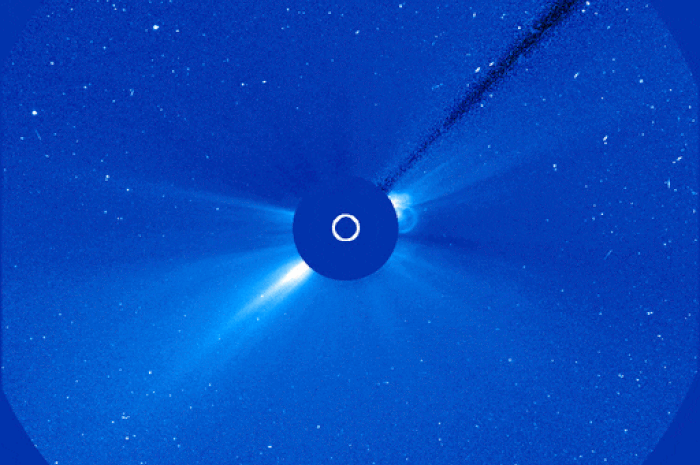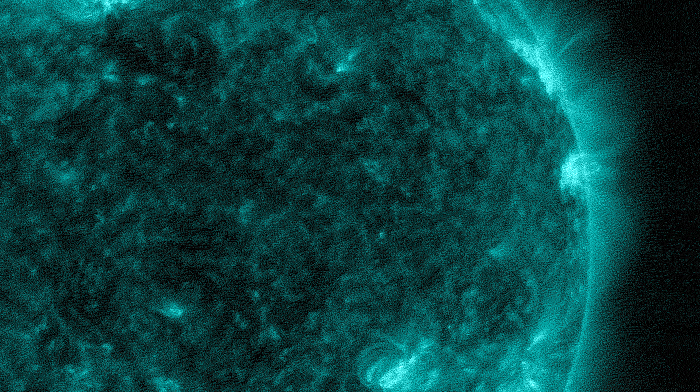After a series of eruptions on the Sun, Earth may be in for auroras over the next few days.A sunspot called AR2929 has emitted two solar flares, accompanied by coronal mass ejections. Although neither was directed at Earth, the ejections that are currently blasting through space may deliver glancing blows to our planet's atmosphere that could cause minor geomagnetic storms.
The first flare took place on January 18 at 5:44 pm UT, and was categorized as an M1.5 class-flare. The second erupted on January 20 at 6:01 am UT. It was more powerful, clocking in at M5.5. Both are considered mid-level flares – not the most powerful activity of which our Sun is capable, but plenty strong enough for its effects to be felt here on Earth.
For both flares, a burst of X-rays ionized the top of Earth's atmosphere, causing brief, minor short-wave radio blackouts; the first above South America and the second over the Indian Ocean.
Coronal mass ejections (CMEs), which are caused by magnetic field lines snapping and reconnecting, are massive ejections of up to billions of tons of plasma from the solar corona, carrying an embedded magnetic field. These often occur in concert with solar flares, and travel outwards from the Sun, taking several days to arrive at Earth if they're heading in our direction.

If they're not, they can still deliver a glancing blow. That's what we might see with the two CMEs from AR2929. The resulting geomagnetic storms will be minor: perhaps a few power grid fluctuations, minor degradation of radio communications, and minor interruptions to space operations.
We might also see auroras, when charged particles from the CME collide and interact with Earth's atmosphere and magnetic field to produce gorgeous light shows at high latitudes.
Such flares are becoming more common as the Sun ramps up to solar maximum, the peak of solar activity that occurs over an 11-year cycle.
This cycle is based on the Sun's magnetic field, which flips every 11 years, with the north and south magnetic poles switching places. It's not known what drives these cycles (recent research suggests it has to do with an 11.07-year planetary alignment), but the poles switch when the magnetic field is at its weakest, also known as the solar minimum.

The Sun's magnetic field controls its activity, including sunspots (temporary regions of strong magnetic fields), solar flares, and coronal mass ejections, so the solar minimum manifests as a period of minimal activity. After the poles have switched, solar activity gradually ramps up to maximum, when the Sun is at its rowdiest.
The most recent solar minimum took place in December 2019. We're currently in the ramping up stage, heading for a solar maximum in around July 2025. Last year saw some truly epic flares, which could mean we're in for even more spectacular fireworks this year.
No two solar cycles are the same, so it's difficult to predict exactly how active the Sun will get. Probes and observatories such as the Parker Solar Probe and the Solar Dynamics Observatory are helping scientists try to better understand our Sun's behavior in order to better predict solar storms.
The possibly incoming CMEs are due to reach Earth's orbital distance sometime over the next few days, with a good chance of auroras on the weekend. You can keep an eye on the aurora forecast here or here.






No comments:
Post a Comment